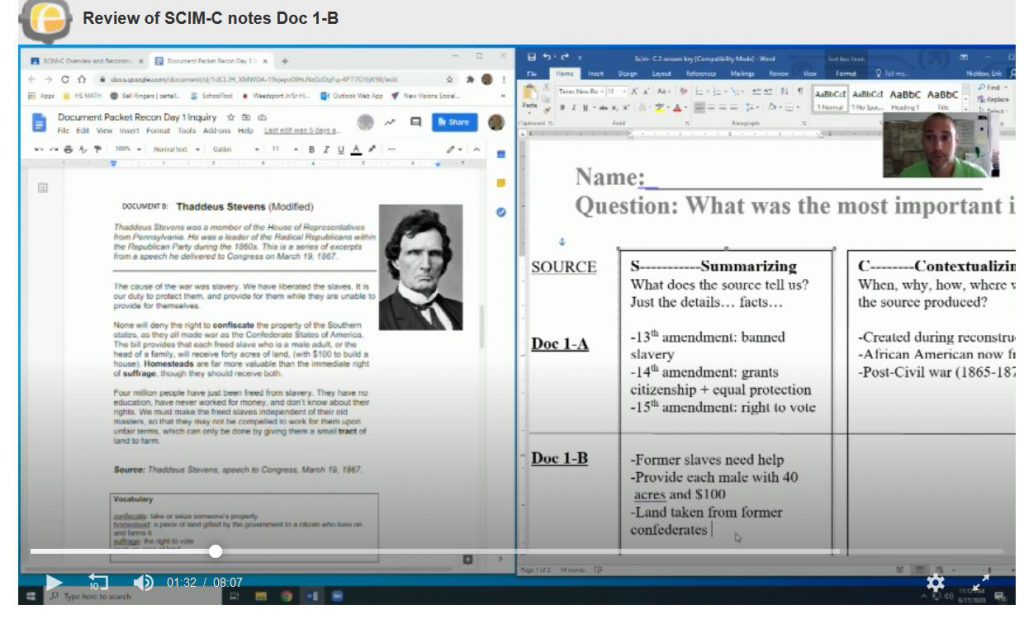
Weedsport history teacher Erik Nicklaw teaches six classes a day and each one includes in-person and remote learners. Whatever he teaches to the students in person, he also records a video of that lesson for virtual learners.
“I post it for the virtual only students so they are getting as close to the same thing as the in-person students are,” he said. “On the days when all students are home, the virtual and hybrid students receive the exact same lesson.”
Nicklaw uses Google Classroom for his grade 8 students and utilizes Buzz for his college history course. In 8th grade I use Google Classroom, for the College History course we use Buzz. He says the technology helps him with organization and providing new content to students.
He said nothing takes place the place of in-person learning, but he’s happy students can still learn despite the circumstances of the COVID-19 pandemic.
“Virtual learning allows us to more easily meet the safety requirements for social distancing in school,” he said.
English teacher Judy Weston said all of her class periods also include a combination of remote and in-person students.
She creates videos of lessons from B days (in-person days) for the remote students, and then on A days (when everyone is remote), she makes videos for everyone. She also holds Zoom calls with students who need help.
“All-remote students usually Zoom with me on A days. They seem to enjoy connecting with me and each other,” she said. “Also, a student in my communications class was quarantined for the first week of school and joined the class via FaceTime a few times.”
Weston utilizes software such as Google Classroom and Ensemble Anthem for videos, Zoom, and FaceTime. She agrees that technology has made a difficult situation a bit easier, and says there are a few other benefits too.
“Obviously tech has allowed teachers to communicate with students remotely. Now that all students have Chrome books every day, I use much less paper,” she said.
“I have also become more creative in lessons for remote days; I’m finding some really good supplemental material such as Ted Talks, videos, links, etc. that are really easy to post in the classroom that students can easily access.”


